Have you ever collected a beautiful leaf and pressed it between pieces of wax paper to preserve it?
I always enjoyed gathering leaves when I was growing up. So, when I learned about Leaf Bread, made using leaves from trees in your yard, I decided to take a trip down memory lane.
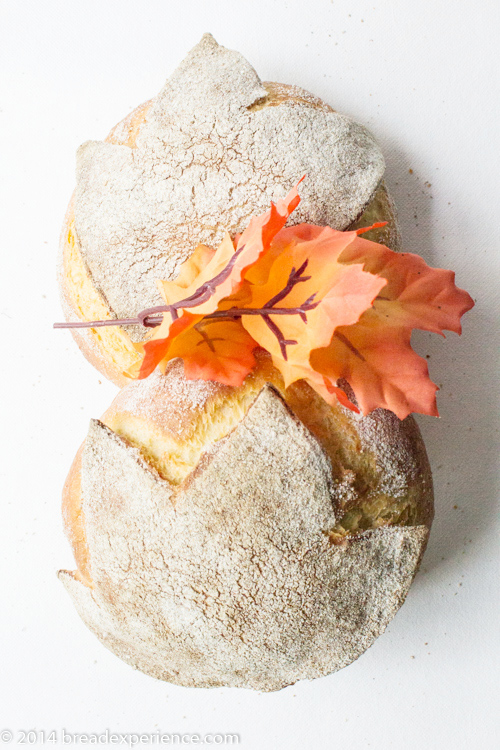
It started when I saw a photo of Olga’s Pane Foglia Leaf Bread on the Artisan Bread Bakers FB group page. Olga’s bread was made in the shape of a beautiful maple leaf.
According to Olga, leaf bread originally comes from Switzerland.
I was so intrigued I had to try it for myself. As it turns out, this bread is not hard at all to make.
When it came time to make the bread, I walked around my yard looking for the perfect leaf. I have maple trees and oak trees, but I decided to use a leaf that I wasn’t familiar with because it was rounded and seemed like it would work well on a round loaf.
After I did some research on different types of leaves, I found out the leaf I chose is a Tulip Tree leaf. Now that I know what a Tulip Tree is, I’m happy I picked this leaf. I love the way it looks.
I had a great time making this Pane Foglia leaf bread. I think this is an activity the whole family would enjoy.
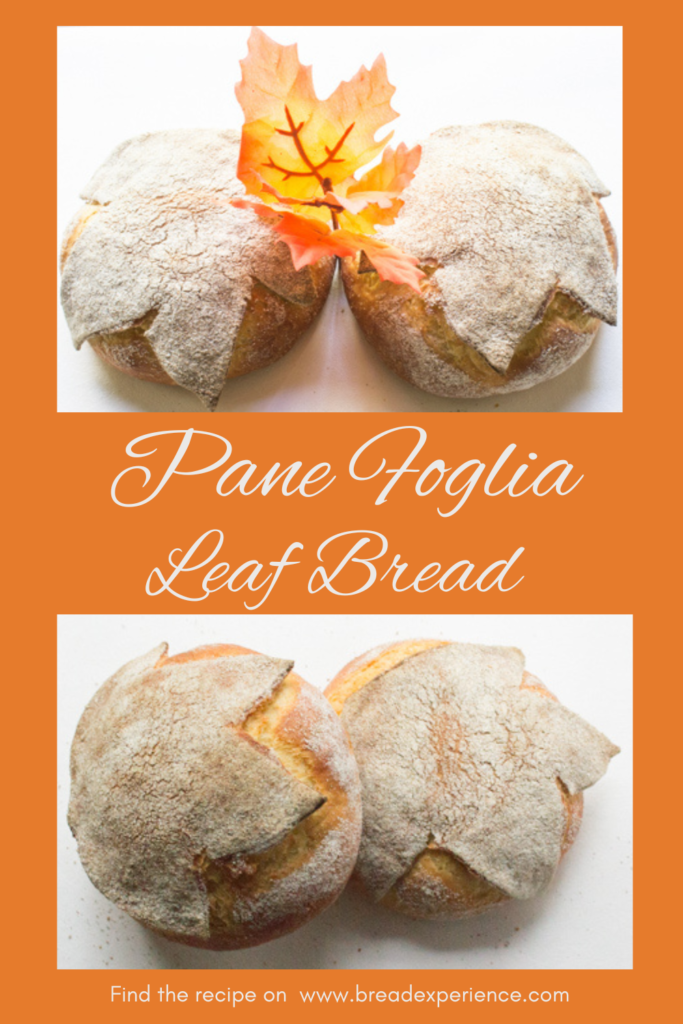
KAMUT Pane Foglia Leaf Bread
Adapted from Pane Foglia Leaf Bread as shared by Olga Altman on the Artisan Bread Bakers FB Group
The dough is made with bread flour and the leaf is rolled in wholemeal rye. If you use regular bread flour, the hydration is 65%; however, I used all-purpose KAMUT flour so I increased the hydration. KAMUT typically absorbs more water than regular bread flour.
Makes: Two Small Loaves
Preferment: 1-2 hour at room temperature; 24 – 48 hours in the refrigerator
| Ingredient: | Weight: | Volume: |
| All purpose KAMUT flour | 100 grams | 2/3 cup |
| Water | 90 grams | 1/3 cup |
| Instant dry yeast | 1.5 grams | 1/4 tsp. |
| Salt, fine sea | 2 grams | 1/4 tsp. |
Mix all of the ingredients for the preferment until fully incorporated. Cover the bowl with plastic wrap. Let it ferment 1-2 hours at room temp, then place in the refrigerator for 24-48 hours.
Main dough: 90-120 min room temp.
| Ingredient: | Weight: | Volume: |
| All-purpose KAMUT flour | 500 grams | 3 1/3 cups |
| Water | 350 grams | 1 1/2 cups + 1–2 T. |
| Light malt extract | 9 grams | 1T + 1/2 tsp. |
| Instant dry yeast | 5 grams | 1 1/4 tsp. |
| Ferment | All | All |
| Salt, fine sea | 10 grams | 1 3/4 tsp. |
| Whole grain rye flour, for rolling leaf dough |
Autolyse:
Mix all the ingredients for the final dough, except the salt. Cover with a kitchen towel and let it rest for 20 minutes at room temperature.
Sprinkle the salt over the top of the dough and incorporate thoroughly using your thumb and forefinger.
Bulk Ferment
Cover the dough with plastic wrap or a kitchen towel and let it ferment for 45 minutes.
Roll Leaf Dough
After the 45 min bulk ferment, remove 270 grams of dough. Divide it into two pieces and roll each piece into a 2 mm thick disk. Cover the disks with plastic wrap and place them in the freezer.
Continue Bulk Ferment
Allow the remaining dough to bulk ferment for an additional 75 minutes (total 120 min).
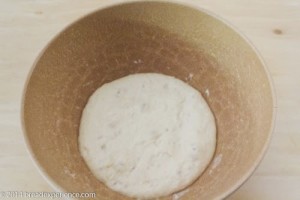 |
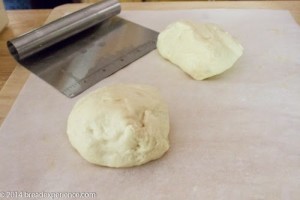 |
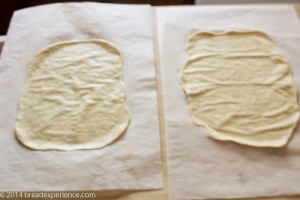 |
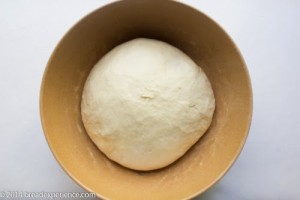 |
Choose a Leaf
In the meantime, go find a couple of leaves from a nearby tree to use for the leaf shape on top of the loaves. Gently wash the leaves with soap and water and pat them dry with a towel. The washing part is optional, but recommended.
Divide and Shape Loaves
After the bulk ferment, divide the dough in two, shape the pieces into boules, and let them rest, covered on the counter.
Prepare the Leaves
Heavily flour your work surface with wholegrain rye flour. Remove the disks from the freezer, spray them lightly with water, and place them (wet side down) on the rye flour.
Roll lightly to make the flour stick. Place a leaf on top of the dough and trace the pattern of the leaf using a sharp knife, then cut out the leaf shape using kitchen shears. Place the leaf on a flat, floured towel.
Flatten the boules slightly and place them on the leaves. Sprinkle some flour over them and cover with another towel. Let the boules proof for one hour.
Note: I had some dough left over after I cut out the leaves so I made a roll with the extra dough.
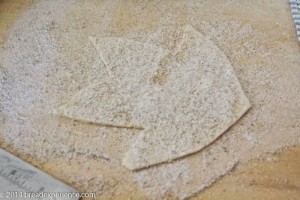 |
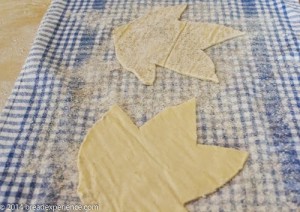 |
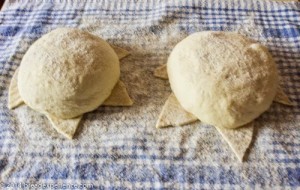 |
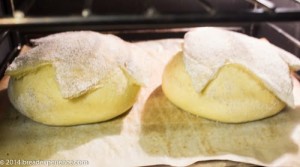 |
Baking the Loaves
Preheat the oven to 425 degrees F. with a baking stone or steel in the lower half of the oven and an iron skillet or other steam pan on the bottom shelf.
Carefully transfer the loaves from the towel to parchment paper or a baking peel and place them on the preheated stone.
Add several ice cubes to the steam pan to create steam. Turn the oven down to 400 degrees F.
Bake the loaves for 25 to 35 minutes, or until the desired brownness is achieved and the loaves sound hollow when thumped on the bottom. Partway through the bake cycle, rotate the loaves for even baking; and remove the parchment paper (if using) to allow the bottom of the loaves to firm up.
Remove the loaves from the oven and transfer to a wire rack to cool before slicing and serving.
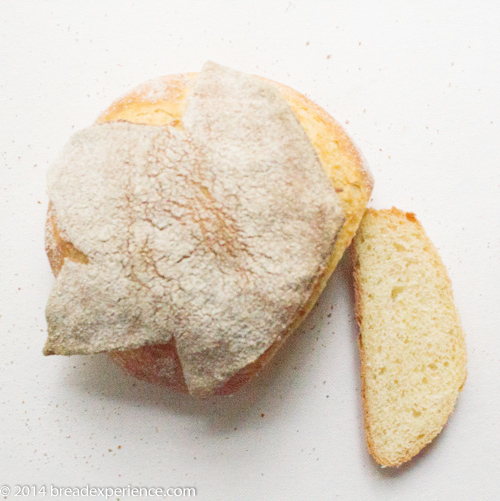
Making this bread was so much fun. Now, I want to collect leaves from all of the trees in my yard and make several different types of leaf bread.
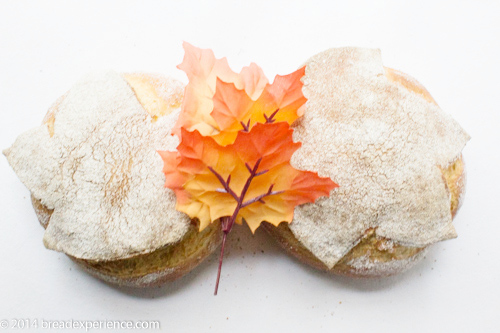
These loaves have been yeastspotted.
Not only did I enjoy making this bread, I learned more about different types of leaves and trees. There’s just something about bread.
Happy Baking!
Cathy
Leave a Reply